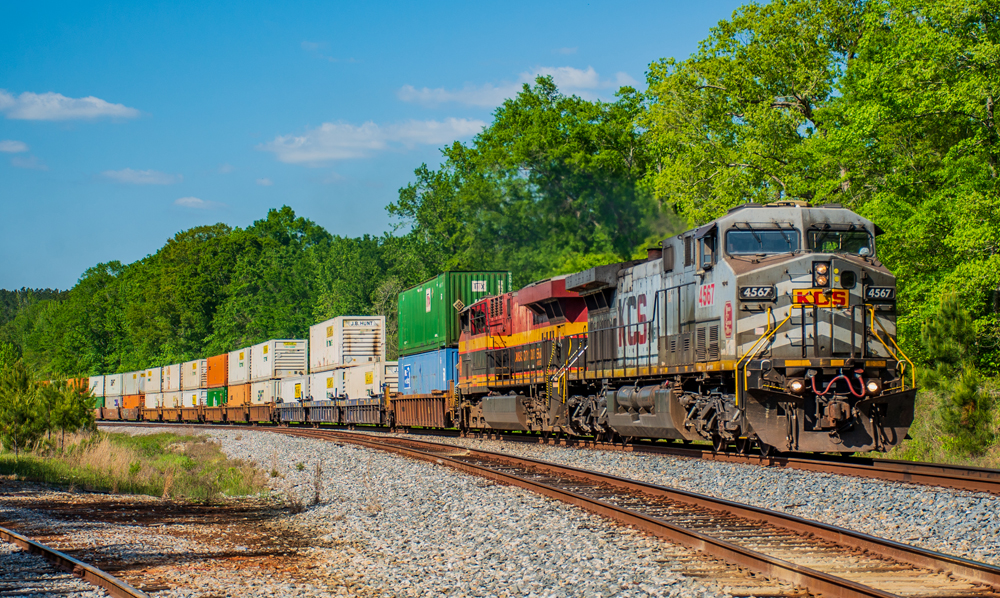
The agreement Canadian Pacific Kansas City and CSX Transportation reached last month to create a new corridor linking the Southeast with Texas and Mexico via Meridian, Miss., is not a new idea: More than two decades ago Kansas City Southern CEO Mike Haverty sought to tie his cross-border railroad to CSX by having the companies purchase short line Meridian & Bigbee.
Today it’s still a good idea — and it’s easy to see why. Genesee & Wyoming’s Meridian & Bigbee plugs a 148-mile gap between CPKC at Meridian and CSX just outside of its Montgomery, Ala., hub. The route is a big advantage over the current CPKC-CSX interchange via the circuitous, slow, and notoriously unpredictable New Orleans gateway. And direct interchange is superior to the existing haulage agreement between CSX and M&B.
The deal will provide CSX with far better access to Houston; Laredo, Texas; and Mexico, while the new gateway gives CPKC another avenue for volume growth, something it needs in order to pay for the $31 billion CP-KCS merger.
The three-way agreement involving CPKC, CSX, and G&W has a lot of moving pieces. CPKC will acquire the trackage M&B owns between Meridian and Myrtlewood, Ala. CSX will operate the trackage it currently leases to M&B between Myrtlewood and Burkeville, Ala., 20 miles west of Montgomery. The direct interchange technically will be at Myrtlewood. M&B, meanwhile, will continue to provide local service between Myrtlewood and Meridian without interchange restrictions. (For a history of the M&B, see this Classic Trains article by Brian Schmidt.)
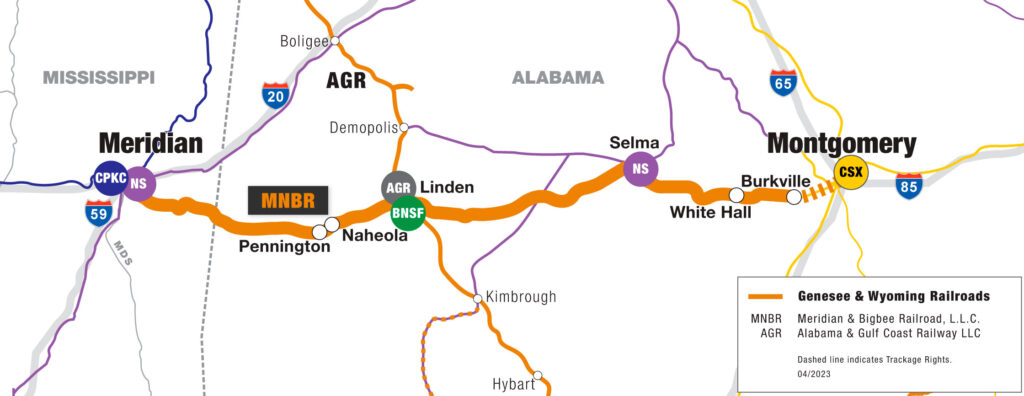
The big picture, CPKC CEO Keith Creel says, is the potential created by direct interchange with CSX via Meridian because the route connects the high-growth areas of the Southeast, Texas, and Mexico.
By 2026 four new auto plants will join those CSX already serves in the Southeast and Midsouth, which Creel says will create an opportunity for the railroads to participate in automotive supply chains linking parts and assembly plants in the U.S. and in Mexico, where CPKC de Mexico serves 16 assembly plants. Intermodal customer Schneider partners with CPKC for its cross-border Mexico traffic and partners with CSX in the East, so the expectation is auto parts would move in intermodal service over the new interchange route.
Creel says CPKC and CSX will beef up the Meridian & Bigbee’s track to Federal Railroad Administration Class III standards, which will allow 40 mph operation, up from the current combination of 10-mph and 25-mph track speeds. As part of its maintenance responsibilities in Meridian, CPKC has begun making improvements to the M&B connection, including clearance work that will allow the route to handle double-stacks.
In a decade, Creel says it’s possible that due to traffic growth the line could have centralized traffic control and be good for 60 mph operation. That suggests CPKC and CSX would exchange at least three trains each way per day, which operations experts say is typically the volume trigger for investing in CTC.
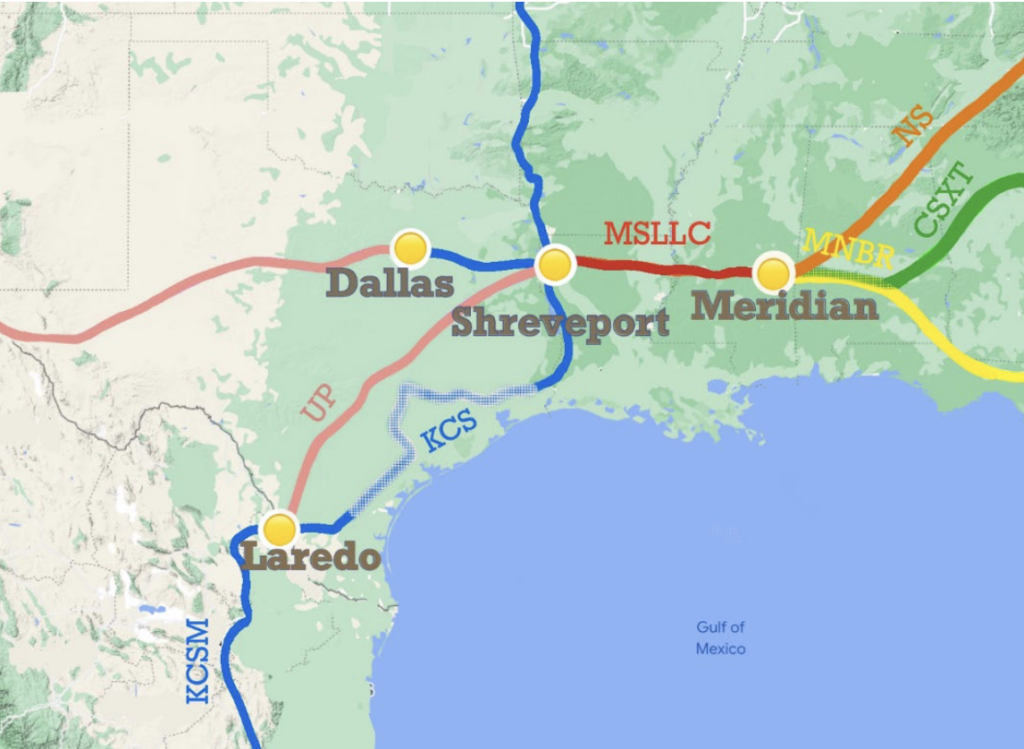
The CPKC-CSX direct interchange via Meridian comes with some competitive wrinkles.
First, the deal does not make Norfolk Southern happy. The Meridian-Shreveport, La., route is part of the NS-KCS Meridian Speedway joint venture that dates to 2006. NS gained a 30% interest in the KCS line in exchange for investing $300 million in capital improvements. Under the joint venture, NS has the exclusive right to interchange certain types of intermodal traffic with KCS, and now CPKC, at Meridian. The exclusivity agreement covers NS intermodal traffic moving between the Southeast and Dallas, as well as transcontinental intermodal traffic between the Southeast and West Coast via Shreveport or Dallas/Fort Worth.
CSX unsuccessfully sought to blow up the exclusivity arrangement during regulatory review of the CP-KCS merger. But thanks to the new agreement with CPKC, CSX will be able to route intermodal traffic between the Southeast and CPKC terminals in Kendleton, Texas, outside Houston; Laredo, Texas; and in Mexico. The service will be new competition for NS.
Second, CSX currently hands its Mexico-bound traffic to Union Pacific at New Orleans. UP then hauls it to CPKC de Mexico at the Laredo gateway. Count on CSX cutting out the UP middleman and diverting this traffic to the faster and presumably far more predictable CPKC route via Meridian.
Finally, during the CP-KCS merger hearings all of the other Class I railroads raised concerns that CPKC would crimp their existing KCS and CP interchanges as part of an effort to unfairly divert traffic to the new combined CP-KCS network. Ironically, here’s CPKC creating a new gateway with CSX.
Creel says CPKC is interested in growing with both Norfolk Southern and CSX via the Meridian Speedway. And a CPKC spokesman says the railway will honor its agreement to continue handling NS intermodal traffic over the Speedway.
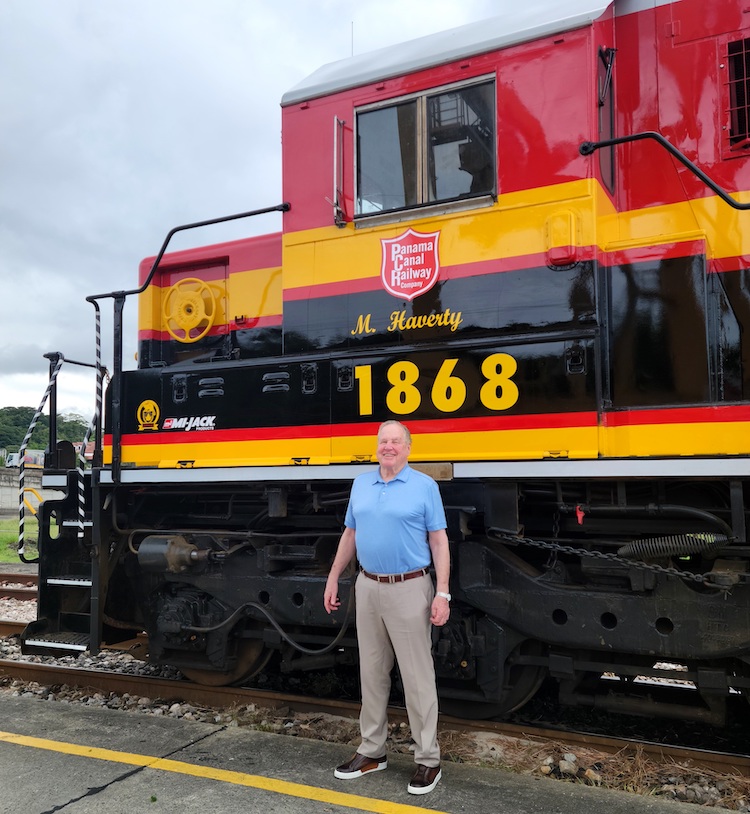
“This is a BIG deal,” Haverty says of the three-railroad agreement. “This is exactly what I proposed to [CSX CEO] John Snow well over 20 years ago. I told him we could both buy this line and it would give CSX access to the Meridian line, the shortest, fastest and safest rail route between the Southeast and Southwest U.S.”
The railroads held meetings but nothing came of them.
“Why didn’t such a logical concept become reality back then? Because the two dominant railroads in the East were afraid to do anything with KCS that would clearly upset the two dominant railroads in the West,” Haverty says. “The big boys in the West both wanted KCS to disappear and did not want the big boys in the East doing business with us.”
The history of the KCS Meridian route bears this out.

The first issue to cause friction was the NS-BNSF interline intermodal service between Atlanta and Alliance, Texas, just outside Fort Worth. NS, concerned that its Southwest and West Coast intermodal traffic might stub at Meridian, in 2000 entered a haulage agreement with KCS to move this intermodal traffic from Meridian to Alliance. This agreement really ticked off Union Pacific, Haverty says. But BNSF wasn’t happy, either, he says, because the haulage deal shortened its length of haul and therefore its revenue on Southeast intermodal traffic. The 2006 NS-KCS Meridian Speedway agreement prompted BNSF to divert its Atlanta intermodal business to CSX via the circuitous route through Springfield, Mo., and Memphis, with interchange at Birmingham, Ala. As a result, NS and UP then teamed up for transcontinental interline intermodal service over the Speedway via Shreveport.
Today’s CPKC-CSX deal is good for both railroads — as well as the railroad industry — because it will produce volume growth, says Haverty, who is pleased to see things finally come full circle under Creel.
“Keith Creel is a phenomenal railroad leader,” Haverty says. “Keith has accomplished many things in a short period of time that I couldn’t get done during my 20-year career at KCS. He is the most innovative and operating-oriented CEO in the U.S. rail industry, in my opinion.”
You can reach Bill Stephens at bybillstephens@gmail.com and follow him on LinkedIn and Twitter @bybillstephens






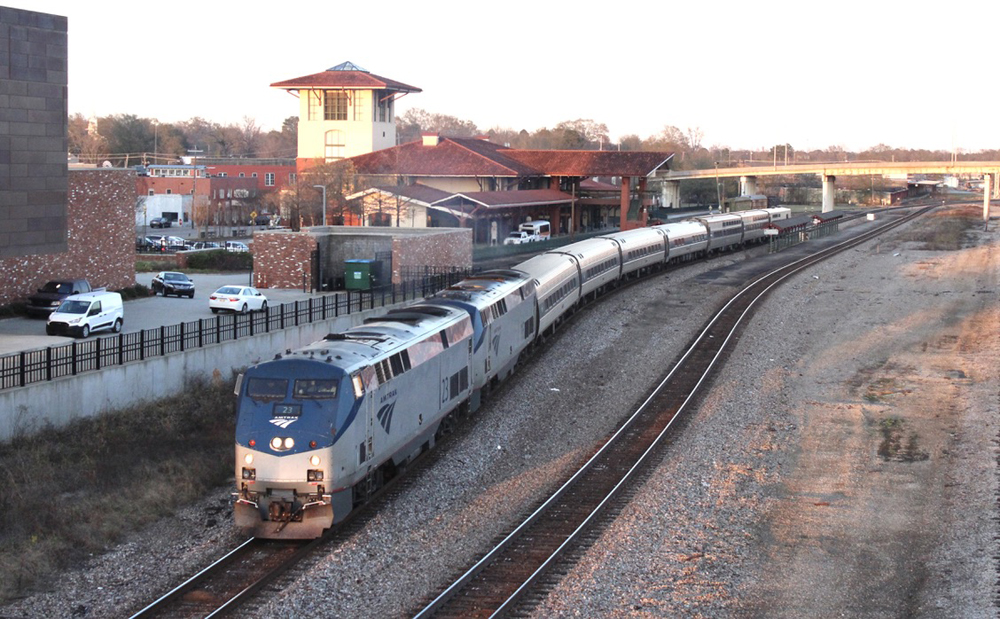
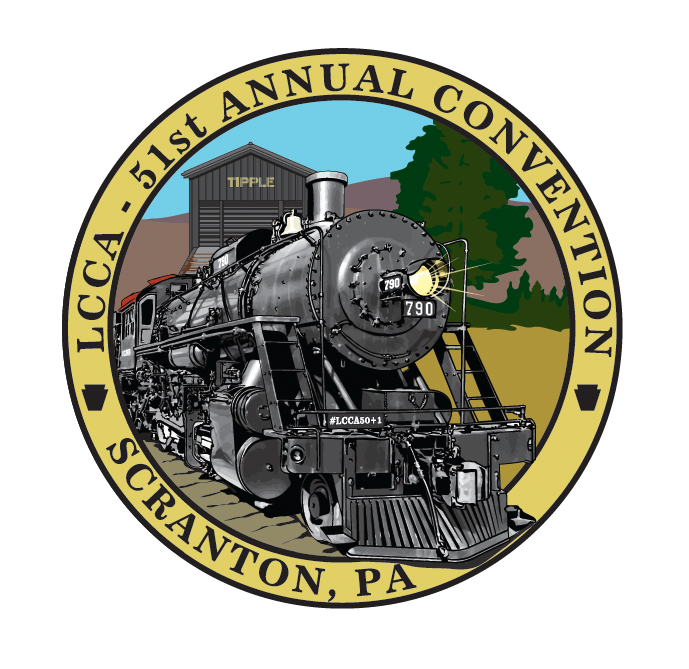
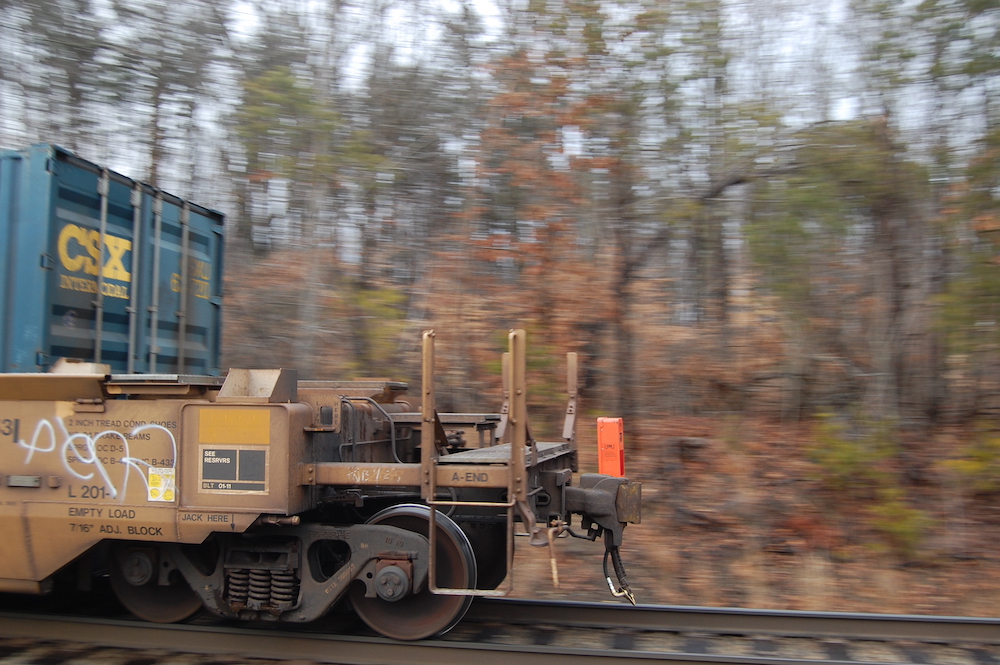
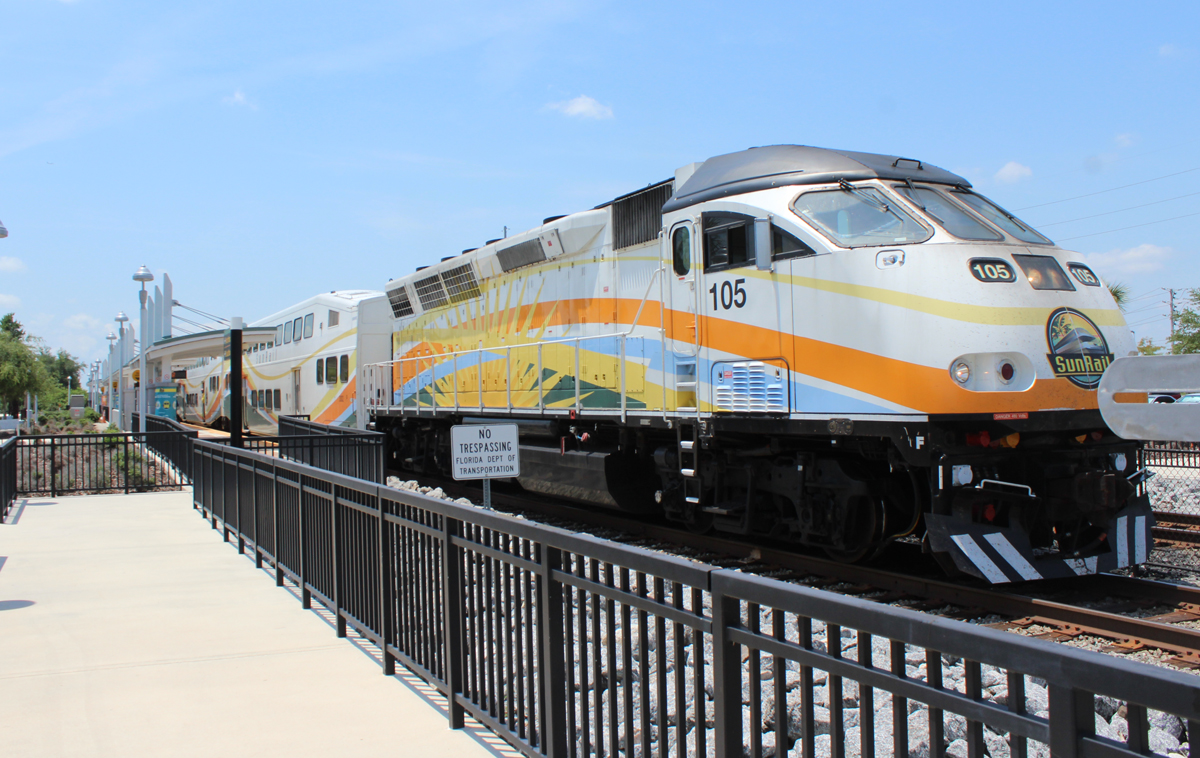




I would say that for this to be a real killer Creel needs to something with Houston to speed up his trains.
“This is exactly what I proposed to [CSX CEO] John Snow…” Well there’s your problem. Would have been better off talking to the stapler on the desk.
That said, the second map doesn’t reflect the rebuilt Macaroni line making the circuitous CPKC line even more circuitous.
Snow wasn’t an operations guy, he was a regulatory guy with his eyes on DC. A lawyer with connections inside the beltway. He was brought in the apply Staggers to the B&O and later the CSX agglomeration.
Living through post-agglomeration CSX in the late-80s/early 90s made one wonder if the suits on Water Street were purposely trying to go out of business. Decades later the truth came out courtesy of a “well-dressed hobo.” There were moves and desires to pull an ICG and dump the railroad assets in whole or in pieces. One person proved the railroad was positioned for growth, Snow got his much desired gubmit job and CSX became the CSX we know today. Ergo, back during the Haverty/Snow conversation more railroad was not on the agenda.
They’ll have H*ll to pay getting through Selma, AL; city government will demand some kind of payback to allow trains through there.
Lived there 69-75, & can remember the old L&N & Southern Railway being @ odds w/each other @ the time. Visualizing the Under Armor logo ‘UA’; the Southern’s tracks formed the ‘U’ & the L&N forming the ‘A’.
Both railroads Dispatch would deliberately hold up the others trains for hours on end, effectively blocking nearly all city streets & cutting Selma in half.
Got so bad, the Mayor @ the time ordered the Police to arrest train crews for blocking streets, trying several times to do so. Both lines came to an agreement years ago to rework the tracks so it doesn’t happen anymore. As I said above, the city government will demand something in return for allowing the trains trough.
A westbound L&N freight back in the day was transporting 155 SP Howitzers bound for Vietnam. The turret lock came loose on one & it traversed out just as the flat cars were crossing the Cahaba River west of Selma on a Through Truss Bridge. The gun turret caught the side of the Truss, bringing the bridge, howitzers, & every car behind it into the river.
I can also foresee major improvements or even eventual replacement of the current M&B bridges over the Alabama & Tombigbee Rivers.
Excellent article Mr. Stevens. I was privileged to be working for KCS on what became the Meridian Speedway when Mr. Mike Haverty took the reins at KCS. He’s my most admired railroader for his vision linking the Southeast and Southwest U.S. with Mexico being the plum he picked from the grasp of U.P. and BNSF. I think they’re still licking their wounds over that smooth, intelligent vision of Mr. Haverty. He linked the perfect partners, through time, of the most major lines connecting our nation The Meridian Speedway went from a 10 – 20 mph line to it’s excellent and well-maintained tracks and bridges today. CTC was installed and this is now a true speedway, moving freight right through the middle of the BIg Four. Competitive rates have benefitted all concerned parties, especially the stock holders. I grew into the railroader I am today thanks to the Vicksburg Route and Mr. Haverty running his railroad. Santa Fe lost a golden goose when it let Mr. Haverty go. He moved right into leading KCS and shocking the railroad industry with his forethought honoring NAFTA and it’s founders. It’s purpose has now been realized. CPKC has an interesting heritage that started with high ambitions and they’re being showcased today. Thanks Mr. Mike Haverty.
If it were not for all the dumb railroaders in the room this deal could have gotten done 25 years ago. Mr. Haverty will usually be happy to describe how angry, nasty and bitter all the Class One presidents were after he and J.B. announced the deal of the century in 1989. Licensed monopolies like railroads do not like it when someone (very smart btw) upsets the apple cart and Mike knew how to do it in very big way. Also, don’t forget that in mid-1986 Rob Krebs tried to do some deals with Norfolk Southern, but David Goode refused.
Correction, it was mid-1996 for the Krebs-Goode encounter. You can read the entire sad, sorry story in the Krebs’ autobiography “Riding the Rail” on pages 127-128.
If I recall from your various posts you’re a Santa Fe man.
Best railroad ever.
Just west of Myrtlewood, AL is where the NASA Rocket Train collapsed a trestle & derailed some years ago.
Yes, Mr. Landey, (with apologies to Johnny Mercer) I’m proud to say that for six wonderful years, I made my run, and I made my pay on the Atchison Topeka & the Santa Fe.
I would also remind Mr. Sypert that Robert D. Krebs was one of finest railroad CEO’s in America. He had also once been GM of the Cotton Belt. The only problem was that once Santa Fe became just a railroad again there just wasn’t room for both Krebs and Haverty.
Great article. However like the initial article about this agreement, it would be really helpful if key locations mentioned in the text, i.e Myrtlewood, Ala., was shown on the map provided– or its location described in the text.
Thanks for an otherwise great article.
Well about 8 miles west of Linden. Great little village . Population 2020 census 60. But still has Post office open 1000 – 1200 only. Lots of abandoned buildings. If you are in the hotel business maybe you could fix up one for lay over crews but only if C-PAK and CSX say they will lay over any?
Who can tell me if haulage rights are nothing more than the carrier names on a bill of lading, or whatever they call it now in the digital age? Is the physical movement of the cars handled as though they were simply interchanged or does the carrier holding the haulage rights have discretion as to how and when they are moved and delivered? Or is the traffic of the haulage rights carrier simply used to fill out the tonnage of the grantor’s already operating train?
Also, who can tell me if KCS trains are still subject switch tenders and hand thrown switches while crossing the former IC mainline in Jackson?
Interesting, sets up CPKC quite well in leveraging their pricing between CSX and NS for Mexico-East Coast traffic. Creel is winning the chess game right now. He is taking advantage of the fact he straddles the east and west with a Mexico gateway. Also taking advantage of the fact that CSX and NS are weaker roads.
BNSF has rights into Birmingham AL, but I don’t think it sees the interchange going west they would like.
It will be interesting to see how UP and BNSF respond to the new competition for eastbound traffic.
CSX and NS aren’t weaker roads by any means… CPKC needs to densify its network by any means necessary.. BNSF does not have rights into Birmingham.. It has it own route into Birmingham thanks to predecessor Frisco. BNSF has haulage rights to ATL via CSX.
My bad. I thought they spun off the line back to Amory when they did the AGR spin off to Mobile. Doesn’t change my opinion of the situation to any degree however.
@John Rice, BNSF sold everything south of Columbus, MS